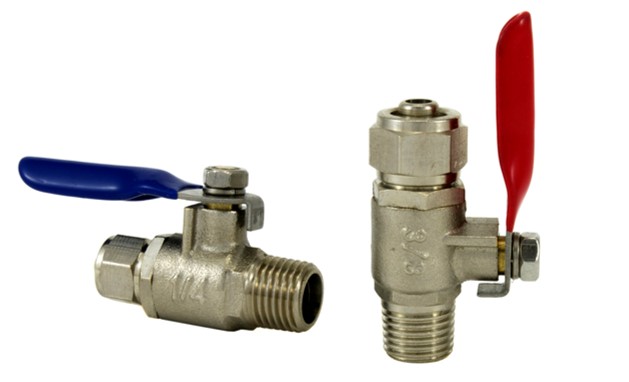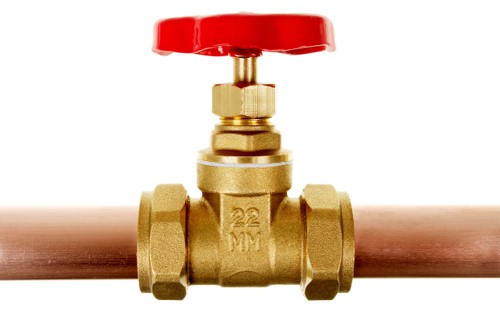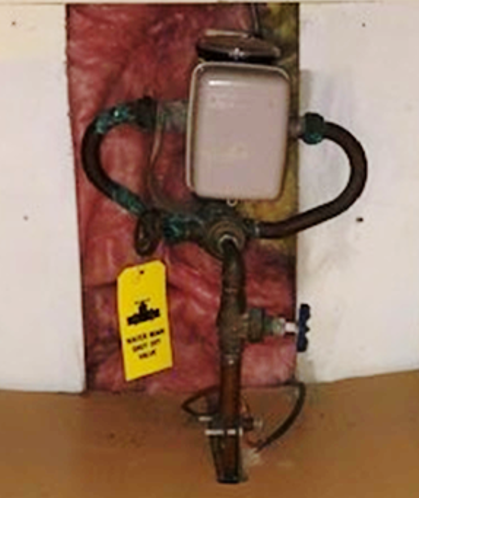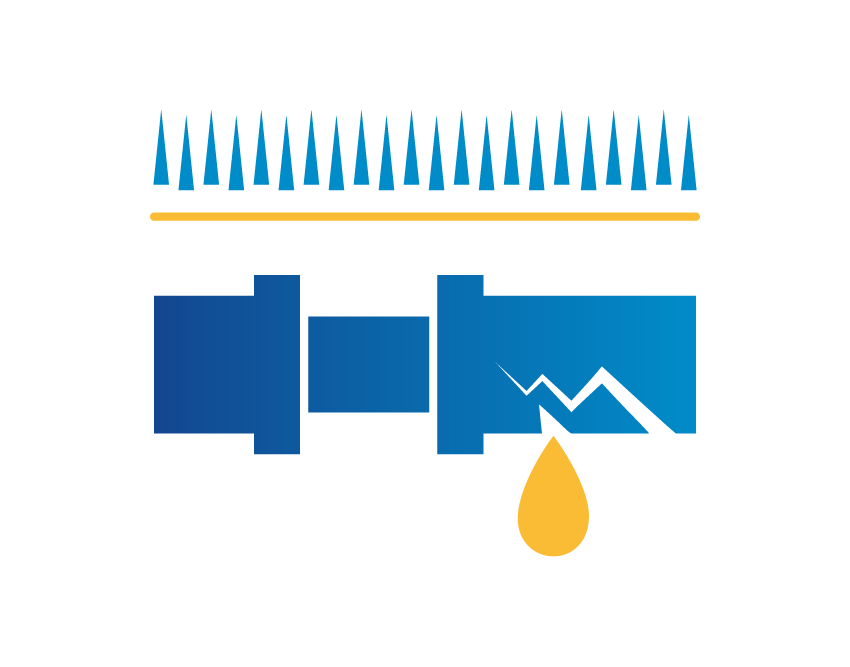Could you shut off your water in an emergency?
You should know this as a homeowner: 14,000 people a day discover a water leak in their home. About 1 in every 60 insured homes nationwide made a claim for non-flood-caused water damage between 2016 and 2020. All that damage adds up to about $20 billion in annual costs.
That’s because leaks inside your home can cause catastrophic damage. When they happen, they can cost hundreds of thousands of dollars to repair and displace you and your family for weeks. You could end up battling electrical and mold issues for a long time afterward.
But savvy homeowners can head off or reduce water-related disasters.
First: Know the main sources of water damage.
Catastrophic water damage that comes from inside your home is usually caused by frozen/burst pipes, leaky plumbing gaskets (often due to age), corroded pipes (hard-water buildup and certain types of drain cleaner can damage your pipes), leaking appliances, and water utility line backups.
Second: Locate your water lines.
Your appliances
Water supply lines for toilets, dishwashers, washing machines, and other appliances usually have easily visible and reachable shut-off valves. Simply turn the handle clockwise to turn off the water supply to your appliance.
Your home’s main water valve
Water mains are usually located in one of three places: inside, on an outside wall, or underground near the street.
Inside. Municipal water utility pipes/supply lines generally run from the street through the side of your house. In cold-weather areas, the main shut-off valve is usually in your basement/cellar/crawl space, utility area, or garage. They valve is often placed by water heaters and can be located on the floor, mid-wall, or overhead.
On an outside wall. In parts of the country that are less likely to experience freezing weather, water lines can often be found on an exterior wall of your house, usually by a water faucet.
Underground near the street. The water shut-off valve may be located underground beneath an access panel by your water meter. If this applies to your home, contact your water utility company as you may need an access key so that you can shut off the water to your home in case of emergencies or when you’ll be away from your home for a while.
Third: Find the valve and learn how to shut it off.
Find the valve on your water main. Keep in mind that you may have to look behind the water heater, the washing machine, or some other appliance; it may even be behind drywall. If the valve is hard to reach, you may need to call a plumber.
Check the condition and type of valve. Once you find the valve, give it a quick inspection to see if it’s leaking or has rust, corrosion, or signs of heavy wear. If you see any of those conditions, have a professional plumber replace it. It’s worth the expense to ensure that the work done properly and that the valve won’t break when you need it most.
Valve type. Your water valve is likely either a ball valve or a gate valve.
 |
Ball Valve These can be placed horizontally or vertically on the water line. Simply turn the lever 90° clockwise. |
 |
Gate Valve Just turn the handle clockwise until you can’t turn it any further. The old saying “left is loose, right is tight” holds true. If the valve is hard to move or simply stuck, use a wrench. Go slowly and never force it to ensure you don’t accidentally cause irreversible damage. Call a plumber if the valve is totally seized. |
Fourth: Drain your taps.
Relieve the pressure in the pipes by running both your hot and cold faucets until they are dry. Once this is done, you can begin repairs.
Finally: Ensure that others know how to turn off your water main.
Make sure your household’s family members, house sitters, and/or renters know how to turn off the water to your home in case of an emergency. Show them where the water line shut-off is located and what to do in an emergency situation.
We can help.

We’ll be happy to send you a free, bright-yellow tag you can hang from your water shut-off valve so that you and others can locate the valve quickly in case of an emergency. Use the chat feature on this page or email us at
We’ll be happy to send you a free, bright-yellow tag you can hang from your water shut-off valve so that you and others can locate the valve quickly in case of an emergency. Use the chat feature on this page or email us at MarketingDept@ElectricInsurance.com.

Call or Use Chat to Contact a Risk Coach
For a no-cost and no-obligation-to-buy coverage-needs assessment, use the chat feature on this page or call us. Our Risk Coaches are glad to help you build a policy that protects you and your home at an affordable price.
Call us at 800.342.5342, Monday through Friday, from 8:00 a.m. to 8:00 p.m. ET.

Home values are at an all-time high. Make sure you protect your investment in your home with sound coverage. This easy-to-understand coverage chart (PDF 861kb) helps you know what to get and why.

Utility Line Repair and Replacement coverage. Municipalities and utility company often place the burden - and cost - of repairing or replacing damaged service lines. This very inexpensive ($66 per policy term) endorsement provides up to $20,000 in coverage.



